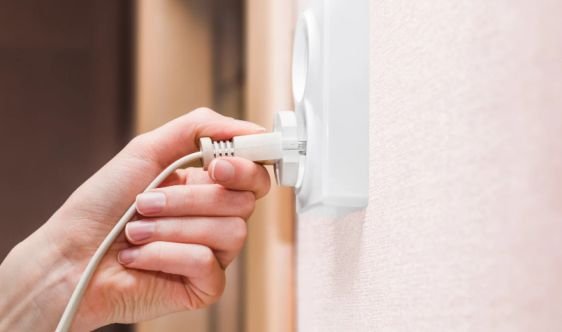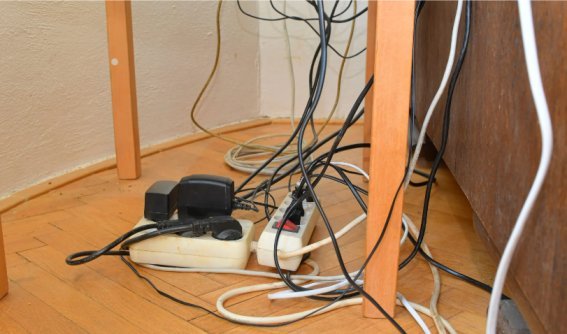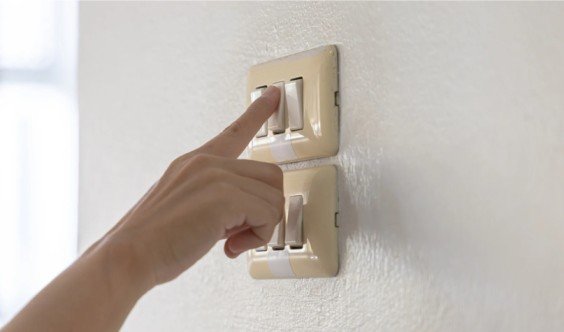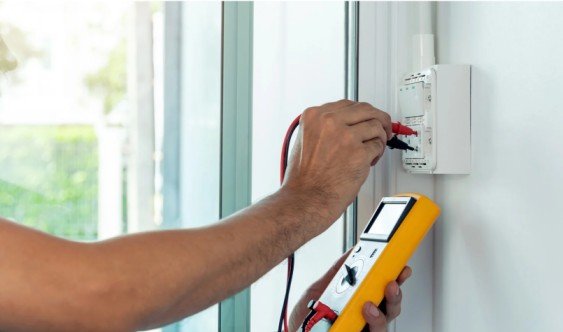Although electricity is essential to contemporary life, its improper use can be fatal. In homes, workplaces, and offices, electrical risks can result in severe injuries, fire, and even death. The most recent safety guidelines require to maintain the current knowledge of the guidelines and to follow the best practices to ensure safety. Here, we provide comprehensive Safety Tips With Electricity backed by the latest standards from authoritative sources like OSHA, NFPA, and IEEE to keep you and your surroundings secure.

Hilarious Safety Tips That Save Lives
1. Don’t Play Electrician Unless You Are One

DIY electrical projects may look cost-effective, but they come with severe risks. Wrong wiring can lead to electric fire, short circuits, and electrocution. A simple mistake, such as using the wrong gauge of the wire or overloading the circuit, may risk your home. Instead of taking chances, hire a licensed electrician who follows National Electrical Code (NEC) guidelines to ensure all installations and repairs are safe and up to standard.
Source: National Electrical Code (NEC)
2. Water and Electricity Are Not Friends
Since water is a strong electrical conductor, the contact between the two can be fatal. When equipment is used close to water sources, many accidents occur. To avoid electrocution:
- Never use moist hands to operate electrical gadgets.
- The equipment should not be placed near the bathtub, sink, or swimming pool.
- Use ground fault circuit interrupters (GFCIs) in moisture-prone areas like kitchens and bathrooms. GFCIs detect irregular electrical currents and shut off power instantly to prevent shocks.
Source: OSHA Electrical Safety
3. Plug It In, But Not Like a Maniac

Plugging a plug into an outlet can also cause damage wiring, cause sparks, and lead to overheating. Instead of using too much force, consult an electrician if an outlet is too tight. Power surges brought by damaged outlets can destroy electronics and start a fire.
Use high-quality, UL-listed surge protectors to protect sensitive equipment.
Avoid loose-fitting plugs that can create electrical arcs.
Source: Electrical Safety Foundation International (ESFI)
4. Inspect Wires Like a Detective
Worn-out or frayed wires are major fire hazards. Before plugging in any appliance:
- Check for cracks, exposed copper, or chew marks (especially if you have pets).
- Replace damaged cords immediately.
- Use insulated, heavy-duty extension cords rated for your device’s power requirement.
Ignoring these stages can lead to small circuits and electricity fires that could be easily prevented.
Source: Consumer Product Safety Commission (CPSC)
5. Extension Cords Are Not Infinite Power Sources

Many people use extension cords as a long-term power solution, which is unsafe. Excessive cords can heat and start a fire. to be safe:
Use a proper wall outlet whenever possible.
If you rely on extension cords, install additional outlets.
Use Surge Guard with built-in circuit breakers to prevent overloading.
Source: National Fire Protection Association (NFPA)
Workplace Safety Rules for Electrical Equipment
6. Don’t Be a Human Lightning Rod

Fires are often the result of accidents and are also often frayed and exposed. This gadget is plug-in, so it may be used to take the place of fires. So replace them immediately to protect yourself from electrical fires, if they are gnawing away like some small monster (or your pets). High-quality surge protectors are essential if you want an electrical system that is both effective and efficient.
7. Label High-Voltage Areas Clearly
Want to keep your coworkers safe? Label all high-voltage areas properly. Clear warning signs prevent accidents and keep everyone aware of potential hazards. Many electrical accidents occur simply because people are unaware of high-voltage zones, making proper signage an essential safety measure. Many electrical accidents occur simply because people are unaware of high-voltage zones, making proper signage an essential part of safety tips with electricity in workplaces.
8. Keep Work Areas Dry and Organized

Spilled coffee and tangled cords don’t mix well with electricity. A clutter-free and dry workspace reduces the risk of tripping over wires or getting shocked by exposed cables. Wet surfaces near power outlets increase the risk of electric shocks, so always clean up spills immediately. Proper cable management solutions, such as cord organizers and floor covers, help maintain an orderly and hazard-free workspace. One of the top safety tips with electricity is keeping workspaces dry and organized.
9. Test Before You Touch
Never assume a wire is dead just because it “looks” like it. Always use a voltage tester before working on any electrical connection. Some live wires can appear inactive but still carry a current strong enough to cause harm. Testing for voltage before touching ensures that you avoid accidental shocks and other electrical mishaps. Following safety tips with electricity means always verifying before making contact.
10. Report Electrical Issues Immediately
If you see any flickering lights, overheating outlets, or burning smells, please report them. electrical issues are the reason why fires or system failures occur every time. Timely maintenance, not only protects workplace safety but also ensures the longevity of electrical equipment.
Source: U.S. Fire Administration (USFA)
Funny Humorous Safety Tips for Work
11. “Turn Off the Switch” Is Not a Suggestion

Leaving the running equipment not only wastes electricity but also increases the risk of overheating. This simple habit can prevent electrical fires and expand the life of your electronic devices.
12. Beware of Office Overloads
One power strip does not mean unlimited electricity! Avoid plugging multiple high-power devices into a single strip to prevent circuit overloads.
13. Keep Cords Away from Office Chair Wheels
Rolling your chair over a cord every day is not a life hack—it’s a fire hazard waiting to happen. Organize your cables properly to avoid damage.
14. Beware of Static Electricity in Dry Office Environments

In winter, touching a metal surface after walking on a carpet can feel like a mini electrocution. Using anti-static mats or humidifiers can minimize static build-up.
For more information about workplace safety, see funny safety tips for the workplace, where we discuss the safety precautions that have yet to maintain a safe and pleasant work environment. In addition, our article on lone worker safety tips provides the necessary strategy to guarantee your safety, when you often work alone. Inform and preserve yourself!
FAQs: Answering Common Electrical Safety Questions
1. What are some funny yet effective safety tips for work?
Avoid “electrifying” handshakes, keep your coffee far from wires, and never treat an outlet like a piggy bank for coins.
2. What is the best way to prevent electrical fires at work?
Regular inspections, proper wiring, and overloaded power strips are the best ways to prevent electrical fires in the workplace.
3. How do you ensure electrical safety in the office?
Unplug unused devices, organize cords properly, and educate employees about electrical safety practices.
Sources:




